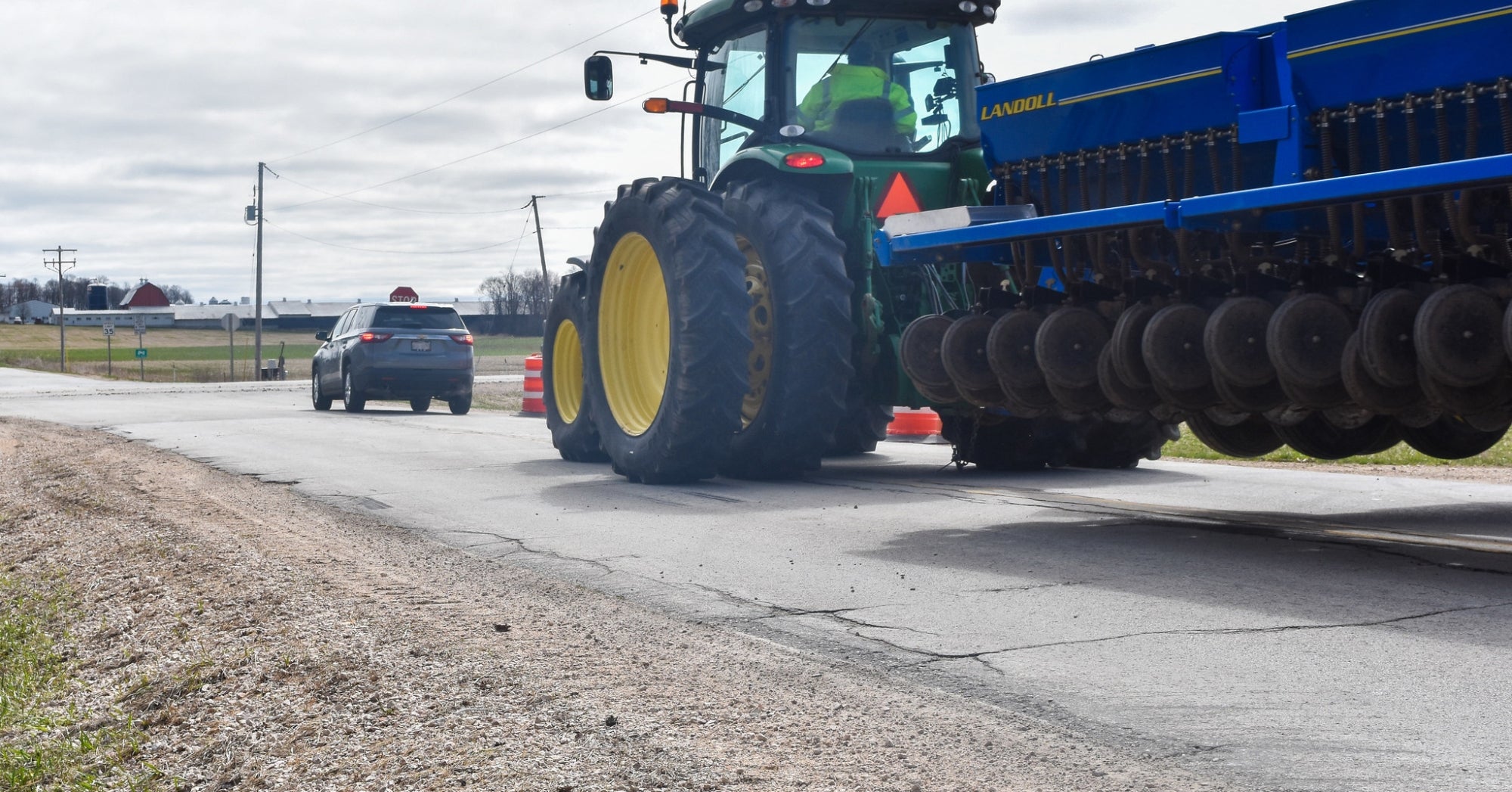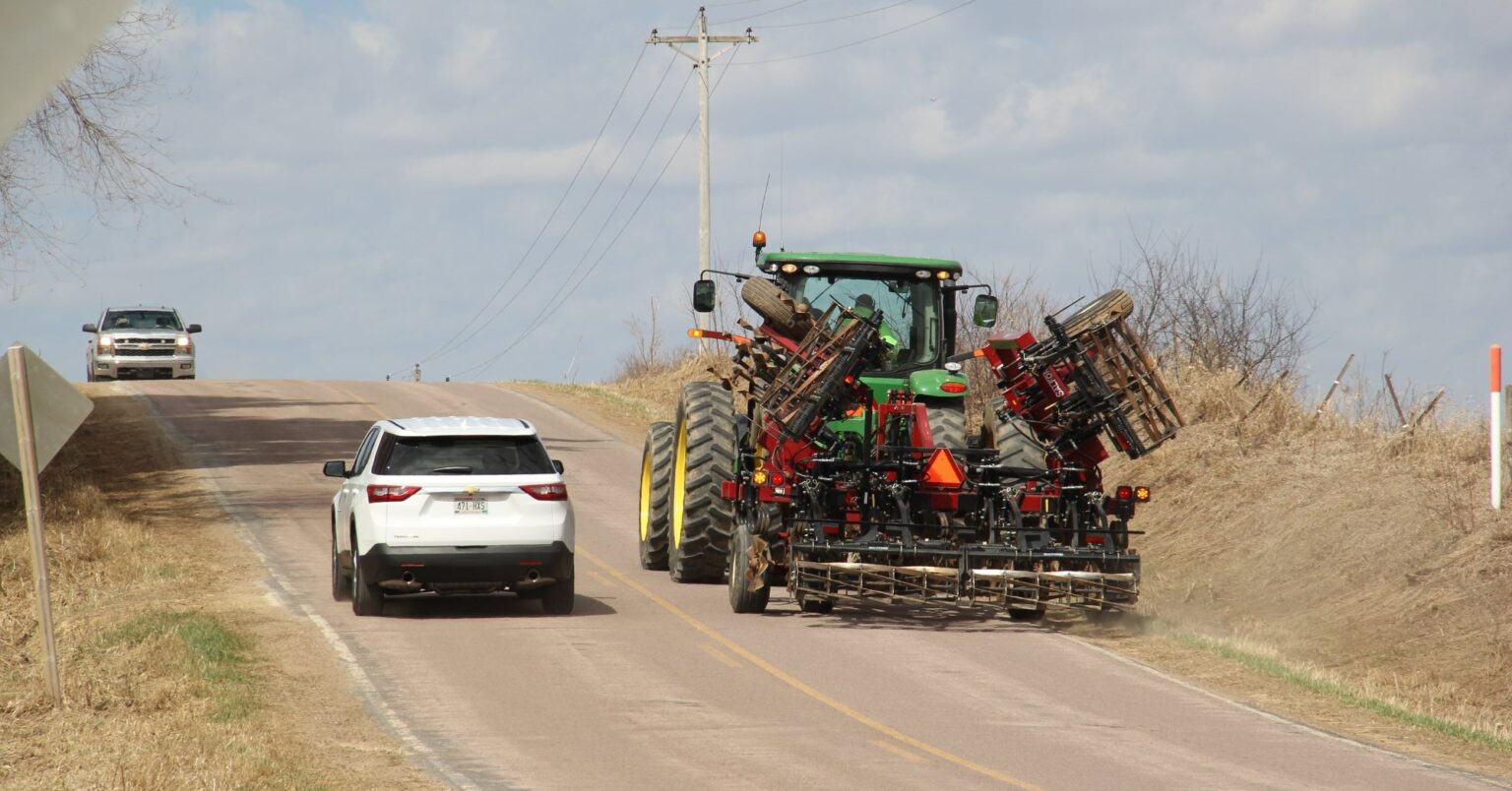Harvest is getting underway around much of the country, so farmers are back to the fields — or driving between fields. Tractors and other implements of husbandry are allowed to operate on many roadways but are often large and slow-moving, which can cause confusion for drivers sharing the roads.
Fall harvest time can be one of the busiest and most dangerous seasons of the year for those involved in agriculture. For this reason, the third week of September is recognized as National Farm Safety and Health Week. The 2025 theme for this week is Safety First, Avoid the Worst and begins Sunday, ending Sept. 27.
“All motorists share the goal of returning home safe to their families,” said Wisconsin Farm Bureau President Brad Olson. “During this time of year, it is important to take extra precautions and pay careful attention to increased hazards on rural roadways.”
Roadway crashes are a leading cause of injuries and death in agriculture. While attentiveness is always necessary when operating implements of husbandry, there are several scenarios farmers should pay close attention to as they take to the roads this fall.

1. Passing
It is typically illegal to pass farm equipment in a no-passing zone, regardless of speed. Motorists must wait until they enter a legal passing zone and can safely pass.
Farmers should never signal or encourage drivers to pass in no-passing zones to avoid confusion and risk. Pull over only if the road’s shoulder is wide and stable enough to move completely out of the traffic lane.
Wide equipment operators are required by law to yield the opposite lane to oncoming traffic to maintain traffic flow and safety.
2. Left-hand turns
Clear communication between farmers and motorists is essential for safe left-hand turns. Farm equipment often has two flashing amber or yellow lights on the cab or fenders. When a farmer signals to turn, the light will continue to flash in the direction the farmer is turning. The other light will go solid. If the equipment lacks signals, hand signals should be used to indicate turns.
Proper lighting and signaling are especially important in low-visibility conditions.
3. Passing at a controlled intersection
Farm equipment is much heavier than a normal passenger vehicle and requires a greater breaking distance. According to the National Ag Safety Database, if a motorist is driving 55 mph and approaches a tractor driving 15 mph, it only takes five seconds to close a gap the length of a football field.
Even if a motorist is able to legally pass a large piece of farm equipment within a very short distance of a controlled intersection, the action itself has a dramatic impact on the reaction time and braking distance for the farm equipment operator. The same is true for divided highways.
4. Be prepared
Safety on the road begins by ensuring equipment meets lighting and marking regulations. Ensure equipment has proper lighting, reflective extremity markings and SMV emblems for vehicles traveling under 25 mph. Extremity markings help motorists gauge width in low-light situations.
Regularly check the visibility of lights, reflective tape and SMV emblems, replacing faded or dirty items to ensure they remain clearly visible.
Equip all equipment operators with road safety training, plan routes to avoid high-risk areas and review local permit requirements before operating.
Farmers and motorists share the responsibility to ensuring roadway safety. Attentiveness is a constant requirement on the road but being prepared and exercising caution during peak times are vital to a successful harvest.
At the end of a long, hard workday, everyone deserves to return home safely.
This article was adapted from a piece published by the Wisconsin Farm Bureau Federation.


